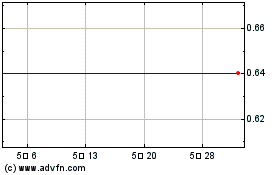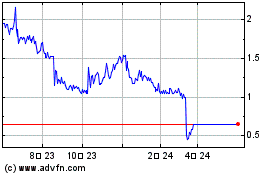- Project to accelerate and optimize the production of a key
casting components1 of the GE Haliade-X Offshore Turbine
- 3D Printing provides flexibility to produce large turbine
components near offshore wind projects, lowering transportation
costs and bringing environmental benefits
- Trials of new technology expected to begin in Q1 2022
GE (NYSE: GE), Fraunhofer IGCV and voxeljet AG (NASDAQ: VJET)
today announced a research partnership to develop the world’s
largest 3D printer for offshore wind applications in order to
streamline the production of key components of GE’s Haliade-X
offshore wind turbine. The Advance Casting Cell (ACC) 3D printer
under development will benefit from financial support from the
German Federal Ministry for Economic Affairs and Energy and will be
capable of printing molds to cast components for the nacelle2 of
the GE Haliade-X that can each weigh more than 60 metric tons,
reducing the time it takes to produce this pattern and mold from
ten weeks or more to just two weeks. In addition, the use of the 3D
printer is expected to reduce the product’s carbon footprint by
eliminating the need to transport the large parts from a central
manufacturing location. The partners expect to launch the project
during the third quarter of 2021 with initial printer trials
starting during the first quarter of 2022.
This press release features multimedia. View
the full release here:
https://www.businesswire.com/news/home/20210916005384/en/
Figure 1 - The basic binder jetting
process is defined by spreading a layer of particle material onto a
building platform. Subsequently a print head applies a binder into
the powder bed where the part is to be printed. Then, a new layer
of material is applied and the process repeats until the final part
or mold ist printed. (Graphic: Business Wire)
The project involves the development of a new, large format 3D
printer capable of producing sand molds for casting the highly
complex metal parts of different shapes and sizes that make up an
offshore wind turbine nacelle. The modular 3D printing process,
which is based on voxeljet’s core “Binder-Jetting” technology, can
be configured to print molds for castings up to 9.5 meters in
diameter and 60-plus tons in weight, dimensions.
Juan Pablo Cilia, Senior Additive Design Engineer at GE
Renewable Energy, said, “The 3D printed molds will bring many
benefits including improved casting quality through improved
surface finish, part accuracy and consistency. Furthermore, sand
binder jet molds or additive molds provide cost savings by reducing
machining time and other material costs due to optimized design.
This unprecedented production technology will be a game changer for
production efficiency allowing localized manufacturing in high cost
countries, a key benefit for our customers looking to maximize the
local economic development benefits of offshore wind.”
The Fraunhofer Institute for Casting, Composite and Processing
Technology IGCV is responsible for casting and materials technology
issues as well as digital process monitoring. “We are taking a
close look at thermal management during casting, and we will
evaluate the ideal proportions of the printing materials,” said Dr.
Daniel Günther, Head of Department Molding Processes and Molding
Materials at Fraunhofer IGCV. “Also, we will develop and test new
approaches to process monitoring as part of the project.” Based on
prior experience the team expects to significantly improve the
environmental footprint of processes involved in producing the
Haliade-X type wind turbines. This sustainability aspect is a
firmly established guiding principle of research at
Fraunhofer-Gesellschaft, according to the institute’s director,
Prof. Dr. Wolfram Volk, who adds: “We aim to optimize the mold
printing to avoid extremely costly misprints or even miscasts, to
save on binder and activator, and to improve mechanical and thermal
behavior during casting. By developing a process that conserves
resources as much as possible, we want to help to improve the
environmental and cost balance in the manufacture of wind
turbines.”
Christian Traeger, Director of Marketing and Sales at voxeljet,
said, “The test mold we printed for GE in 2019 consisted of dozens
of individual parts. With the ACC, we aim to print a significantly
reduced number of parts for the full set. Added to that, the mold
can be optimized in terms of functionality and material
consumption. This optimization makes completely new casting designs
possible that can further enhance the efficiency of the
turbines.”
“While offsite on-demand 3D printing provides many benefits for
small quantities of cast parts, running a 3D printing system
on-site leverages the technology to its fullest capacity. Given the
demand for offshore wind turbines, that will help a lot to fulfill
project schedules and high market demands,” adds Dr. Ingo Ederer,
CEO at voxeljet. “With our productive Binder-Jetting technology in
combination with our experience in large format industrial 3D
printing, we are serving customers in the foundry industry for over
20 years. It is our mission to bring 3D printing into true
industrial manufacturing and we are therefore very excited to be
part of this groundbreaking project.”
The International Energy Agency3 has projected that global
offshore wind capacity will increase 15-fold by 2040, becoming a 1
trillion dollar industry, thanks to falling costs, supportive
government policies and technological progress like that behind the
Haliade-X offshore turbine from GE Renewable Energy. GE Renewable
Energy has been selected to supply its Haliade-X turbine for 5.7
GWs worth of projects in Europe and the US. The company is a member
of the Offshore Wind Industry Council (OWIC) and as part of that
supports various initiatives that aim at increasing the production
of sustainable wind energy.
####
Notes
- Casting is a manufacturing process in which a liquid material
is usually poured into a mold, which contains a hollow cavity of
the desired shape, and then allowed to solidify. The solidified
part is also known as a casting, which is ejected or broken out of
the mold to complete the process.
- A nacelle is a housing unit on top of the tower of a wind
generator that contains its mechanical components.
- Source:
https://www.iea.org/reports/offshore-wind-outlook-2019
####
About GE Renewable Energy
GE Renewable Energy is a $16 billion business that combines one
of the broadest portfolios in the renewable energy industry to
provide end-to-end solutions for our customers demanding reliable
and affordable green power. Combining onshore and offshore wind,
blades, hydro, storage, utility-scale solar, and grid solutions as
well as hybrid renewables and digital services offerings, GE
Renewable Energy has installed more than 400+ gigawatts of clean
renewable energy and equipped more than 90 percent of utilities
worldwide with its grid solutions. With nearly 40,000 employees
present in more than 80 countries, GE Renewable Energy creates
value for customers seeking to power the world with affordable,
reliable, and sustainable green electrons.
Follow us at www.ge.com/renewableenergy, on
www.linkedin.com/company/gerenewableenergy, or on
www.twitter.com/GErenewables
About Fraunhofer Institute for Casting, Composite and
Processing Technology IGCV
Fraunhofer IGCV stands for application-driven research with
focus on efficient engineering, networked production, and smart
multi-material solutions. The institute drives innovation on the
level of manufacturing processes and material sciences, machines
and process chains as well as factory and enterprise networks. One
major focus is on the future scenarios and topics of the casting
industry. Our core competences in this area include indirect
additive manufacturing, molding materials, casting materials,
process development, analytics, and simulation.
In an effort to transfer knowledge from research and development
into industrial applications, our almost 120 scientists generate
individual solutions for the German industry. Our unique selling
proposition lies in interdisciplinary solutions in the fields of
casting, composite and processing technology. As part of the
Fraunhofer Group for Production – an association of production
technology institutes – we support our partners with short-term,
mid-term, and long-term research projects. Thus, we contribute to
ensuring a sustainable competitive edge in Germany and Europe.
Visit our website www.igcv.fraunhofer.de/en, and follow us on
social media: Twitter, Instagram, Xing, LinkedIn und YouTube
About voxeljet
voxeljet’ s (NASDAQ: VJET) roots reach back to the year 1995
with the first successful dosing of UV-resins. In the context of a
"hidden" project, initial 3D-printing tests are performed at the
Technical University Munich. Our company was founded on May 5, 1999
as a spin-off from TUM in Munich with a clear vision in mind: to
establish a new manufacturing standard by developing new generative
processes for the series-production of complex components using 3D
printing. In the beginning, operations are launched with four
employees at the TUM. Today, we are a globally acting, leading
provider of high-speed, large-format 3D printers and on-demand 3D
printed parts to industrial and commercial customers. Components
manufactured with the help of our technology are flying in space,
make mobility more efficient and the production of new engineering
solutions possible. Visit our website www.voxeljet.com, and follow
us on Linkedin, or on Twitter.
Cautionary Statement on Forward-Looking Statements
This press release contains forward-looking statements
concerning our business, operations and financial performance. Any
statements that are not of historical facts may be deemed
forward-looking statements. You can identify these forward-looking
statements by words such as ‘‘believes,’’ ‘‘estimates,’’
‘‘anticipates,’’ ‘‘expects,’’ ‘‘plans,’’ ‘‘intends,’’ ‘‘may,’’
‘‘could,’’ ‘‘might,’’ ‘‘will,’’ ‘‘should,’’ ‘‘aims,’’ “projects” or
other similar expressions that convey uncertainty of future events
or outcomes. Forward-looking statements include statements
regarding our intentions, beliefs, assumptions, projections,
outlook, analyses or current expectations concerning, among other
things, our results of operations, financial condition, business
outlook, the potential timeline for development of and application
of new technology and new materials and their impact on future
business, the industry in which we operate and the trends that may
affect the industry or us. Although we believe that we have a
reasonable basis for each forward-looking statement contained in
this press release, we caution you that forward-looking statements
are not guarantees of future performance. All of our
forward-looking statements are subject to known and unknown risks,
uncertainties and other factors that are in some cases beyond our
control and that may cause our actual results to differ materially
from our expectations, including those risks identified under the
caption “Risk Factors” in voxeljet’s Annual Report on Form 20-F and
in other reports voxeljet files with the U.S. Securities and
Exchange Commission. Except as required by law, voxeljet undertakes
no obligation to publicly update any forward-looking statements for
any reason after the date of this press release whether as a result
of new information, future events or otherwise.
View source
version on businesswire.com: https://www.businesswire.com/news/home/20210916005384/en/
Tim Brown GE Renewable Energy +1-301-509-9352
timothy.s.brown@ge.com Frederik von Saldern voxeljet AG
+49-821-7483-447 frederik.vonsaldern@voxeljet.de Elke Brown
Fraunhofer IGCV +49-821-90678-169 presse@igcv.fraunhofer.de
Voxeljet (NASDAQ:VJET)
과거 데이터 주식 차트
부터 1월(1) 2025 으로 2월(2) 2025

Voxeljet (NASDAQ:VJET)
과거 데이터 주식 차트
부터 2월(2) 2024 으로 2월(2) 2025
